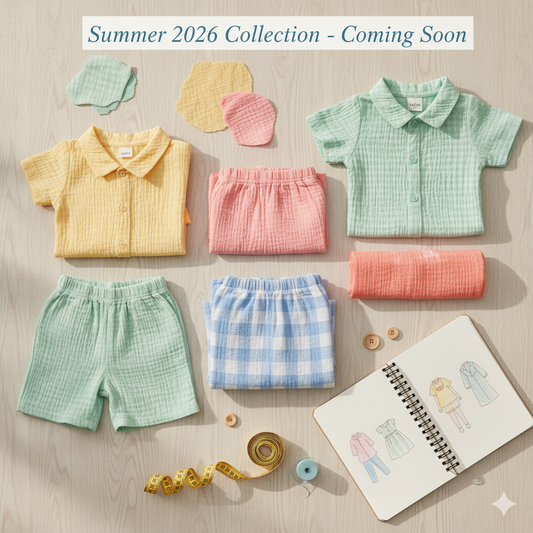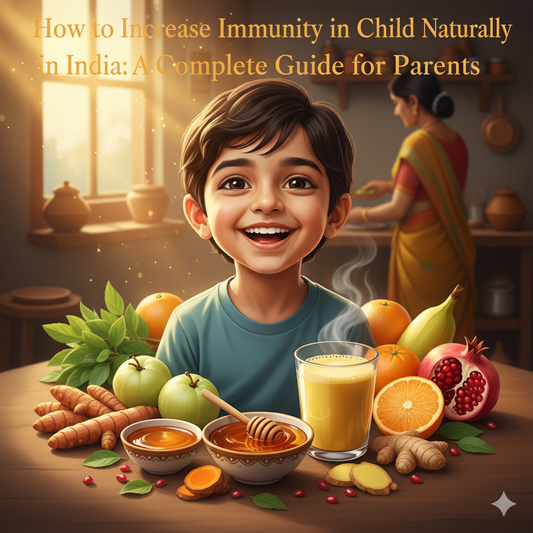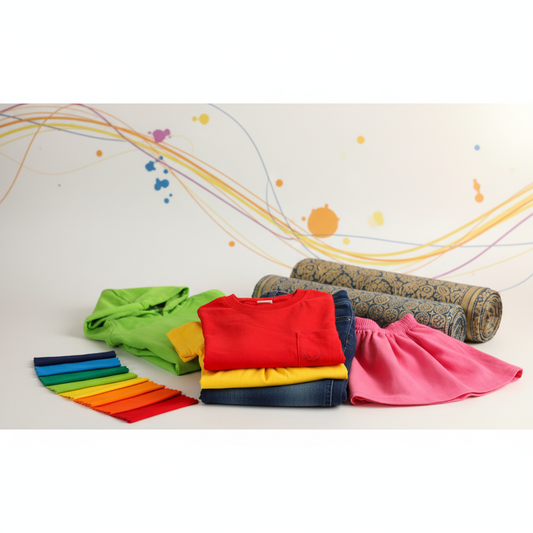
Getting Printing Right is the most difficult part of a kids clothing business
If you run a kidswear brand — or dream of starting one — you’ll hear this again and again from every manufacturer, designer, and printer in the industry:
“Printing is the most difficult part of kids clothing production.”
There are many steps in kidswear manufacturing, from fabric sourcing to stitching, sizing, trims and quality checks. But printing? That’s the stage where things can go wrong in a hundred tiny ways — and each mistake shows right on the surface of your product.
In kidswear, prints are not just decoration. They are emotion. Kids love colour, characters, textures, bright patterns, cute messages, animals, planets, dinosaurs — prints are what make clothes fun. And parents buy because prints look appealing, friendly, safe, and child-appropriate.
So when the print fails, the entire product fails.
Let’s break down why printing is the toughest part of kidswear manufacturing and why every brand — small or big — struggles with it.
1. Kidswear Needs Extremely High Print Durability
Children don’t “gently use” their clothes. They pull, stretch, roll, spill, scratch, climb, slide, sweat and fall — all in the same day.
A print that looks beautiful on Day 1 must also survive:
-
playgrounds
-
school benches
-
repeated washing
-
harsh detergents
-
sweat
-
drool
-
friction
This means your prints must be:
-
wash-proof
-
sweat-resistant
-
crack-resistant
-
colour-fast
Most printing techniques struggle to stay perfect after 10–20 washes. This is why selecting the right print method, ink quality, curing temperature, fabric composition and after-wash process becomes incredibly critical.
2. Polyester Blends, Cotton Blends, and Organic Fabrics All React Differently
One recipe does NOT work for all fabrics.
-
Cotton absorbs dye easily
-
Polyester resists it
-
Lycra stretches and cracks prints
-
Organic cotton reacts differently to heat
-
Rib fabrics distort prints
For manufacturers, this means:
-
multiple curing settings
-
different inks
-
different screens
-
varied wash testing
-
separate SOPs for each fabric
A print that looks beautiful on cotton jersey may turn dull or patchy on cotton interlock. And something that works on polyester may bleed on poplin.
This makes consistency one of the hardest challenges in the entire kidswear industry.
3. Colour Matching Is a Daily War
If you’ve ever sent a printer a reference color like “pastel peach” and received “bright neon orange,” you know this pain.
Perfect colour matching is tough because:
-
inks vary by supplier
-
fabric absorbs colour differently
-
humidity affects mixing
-
curing temperature changes the tone
-
screen mesh impacts intensity
-
bulk dye lots differ from sample dye lots
For kidswear brands where prints are everything, one small wrong shade can ruin:
-
an entire batch
-
a complete photoshoot
-
a whole collection launch
This is why big brands do 3–5 strike-offs before approving one final print.
4. Registration Errors Ruin the Look
Kidswear often uses:
-
multi-colour prints
-
character graphics
-
outlines + fills
-
shadows
-
tiny details
Even a 1–2 mm misalignment makes the design look cheap.
Registration issues occur when:
-
screens are misaligned
-
fabric moves during printing
-
multiple layers don’t line up
-
the printer is inexperienced
-
the fabric stretches during drying
In adult wear, small imperfections may pass.
In kidswear? Never. Parents notice everything.
5. Printing for Kids Requires Safer Inks
You cannot use harsh chemicals or low-grade inks for children’s clothing. Parents today are extremely conscious about:
-
skin sensitivity
-
allergies
-
toxins in dyes
-
fabric touching the mouth
-
chemical smells
Kids put their clothes in their mouth.
They sleep in printed T-shirts.
They sweat into the fabric for hours.
This means azo-free dyes, water-based inks, hypoallergenic chemistry — and not every printer invests in these.
So even if a brand wants safe prints, finding a supplier who meets these standards becomes a challenge.
6. Curing Is the Most Misunderstood — and Most Critical — Step
Most print failures happen not during printing, but during curing.
Curing is what makes the print stick to the fabric.
If the heat is:
-
too low: print washes off
-
too high: fabric burns, print cracks
-
uneven: color changes, patchy finish
-
too fast: ink doesn't settle
Curing depends on:
-
fabric type
-
ink type
-
humidity
-
machine calibration
-
operator skill
Even seasoned printers get curing wrong.
In kidswear, this means returns, complaints, and inventory loss.
7. Kids Require Softer Prints — No Thick, Plasticky Layers
Parents don’t accept:
-
rubbery prints
-
plastisol build-up
-
rough textures
-
heat-transfer peeling
-
sticky surfaces
The print must feel soft, breathable, and flexible — almost like it’s part of the fabric itself.
But soft-hand printing techniques require:
-
advanced machinery
-
premium inks
-
slower processes
-
skilled labour
Which increases production cost — something many printers avoid.
8. Trend Pressure Is Extremely High
Kidswear trends change faster than adult wear:
-
dinosaurs
-
space theme
-
cartoons
-
florals
-
minimal doodles
-
typography
-
summer fruits
-
festive motifs
Every season, every month, every reel on Instagram influences parents’ buying choices.
This forces brands to constantly innovate prints — and printing innovation is expensive, unpredictable, and material-heavy.
9. One Mistake Can Ruin 1,000 Pieces
Compared to stitching mistakes, printing mistakes are far more costly:
-
one wrong screen = entire batch wasted
-
one colour mismatch = reprint needed
-
one curing defect = 1000 pieces ruined
-
ink bleeding = entire order rejected
This is why many manufacturers say printing is the department that gives them the most headaches.
But There Is Good News
At Gozi Lifestyle (Tiruppur), we’ve experienced every printing challenge and learned from every failure. Over the years, we’ve improved:
-
our choice of fabrics
-
our test batches
-
our curing precision
-
our ink safety
-
our rejection analysis
-
our wash testing
-
our screen alignment
-
our QC training
Today, many brands trust us not for just stitching — but for consistent, child-safe, soft-hand printing that survives wash after wash.
Printing may be the toughest part of kidswear manufacturing…
but it’s also what makes a product magical.
Great prints make kids smile.
Great prints make parents buy again.
Great prints build your brand.
And that’s why we put more energy into printing than anything else — because kids deserve clothes that look beautiful, feel soft, and last long.








